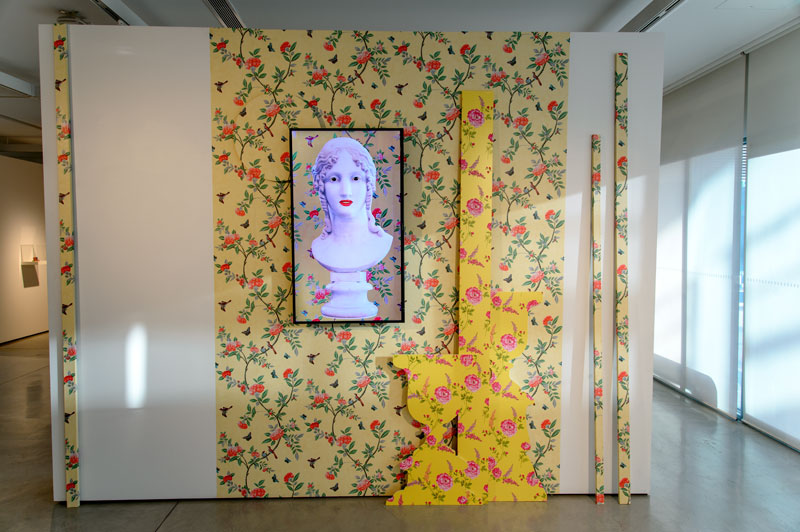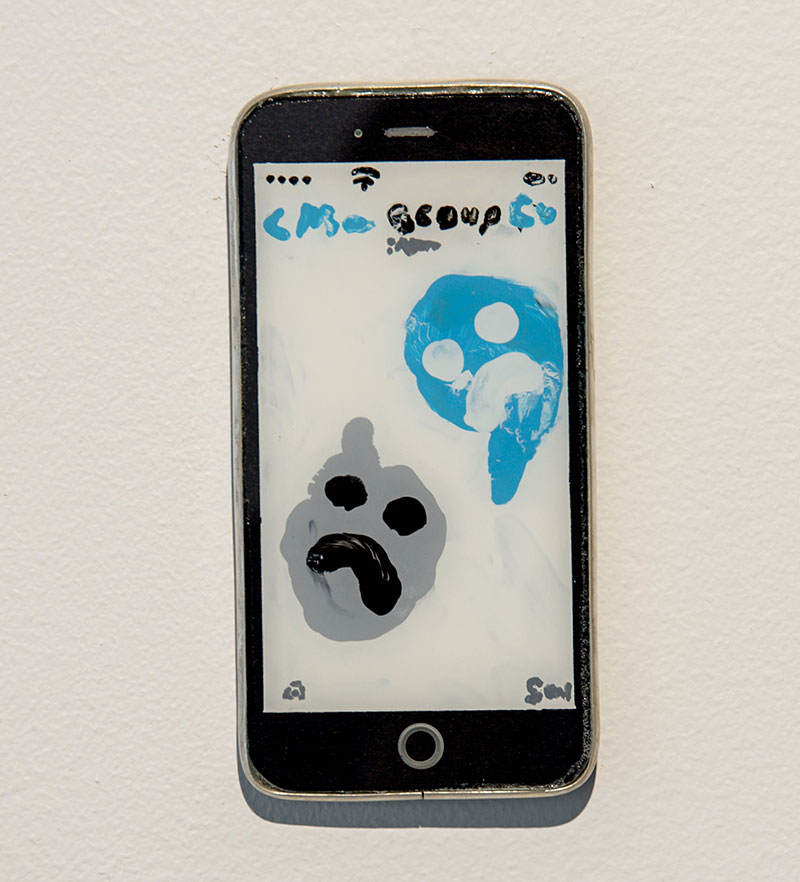
The Mnemonic Mirror presents a cohort of twelve artists who, according to curators Kylie Banyard and Gary Carsley, are gathered together to present work that interrogates the influence of memory in their practice. Incidentally, memory is described by science as the reactivation of electrical signals from previously encoded data across networks of nerve cells that reside in specific areas of the brain; the hippocampus is for long-and-short-term memories while in the prefrontal cortex the active or more immediate memories and tasks are in the process of being filtered for storage. The acts of remembering are our identity. Our sense of our selves is solely dependent on the particular bundle of stories we choose tell to ourselves at any moment in time. Every act of memory is conjuring.
Crammed into the UTS Gallery we encounter all types of memory residues: tacky and cynical, fractured and confused, from the poetic and personal to grandiloquent re-appropriations. I gather from the catalogue essay that all this is a very big deal “as residual forms can serve as memory banks, contouring a sense of historical time as it transits the atemporal punctured dimensionality of the forever now”. Trying to cover every possible theoretical base, I wonder if the curators have not heard of the precession of simulacra or simply considered the constant reverberations of nostalgia.
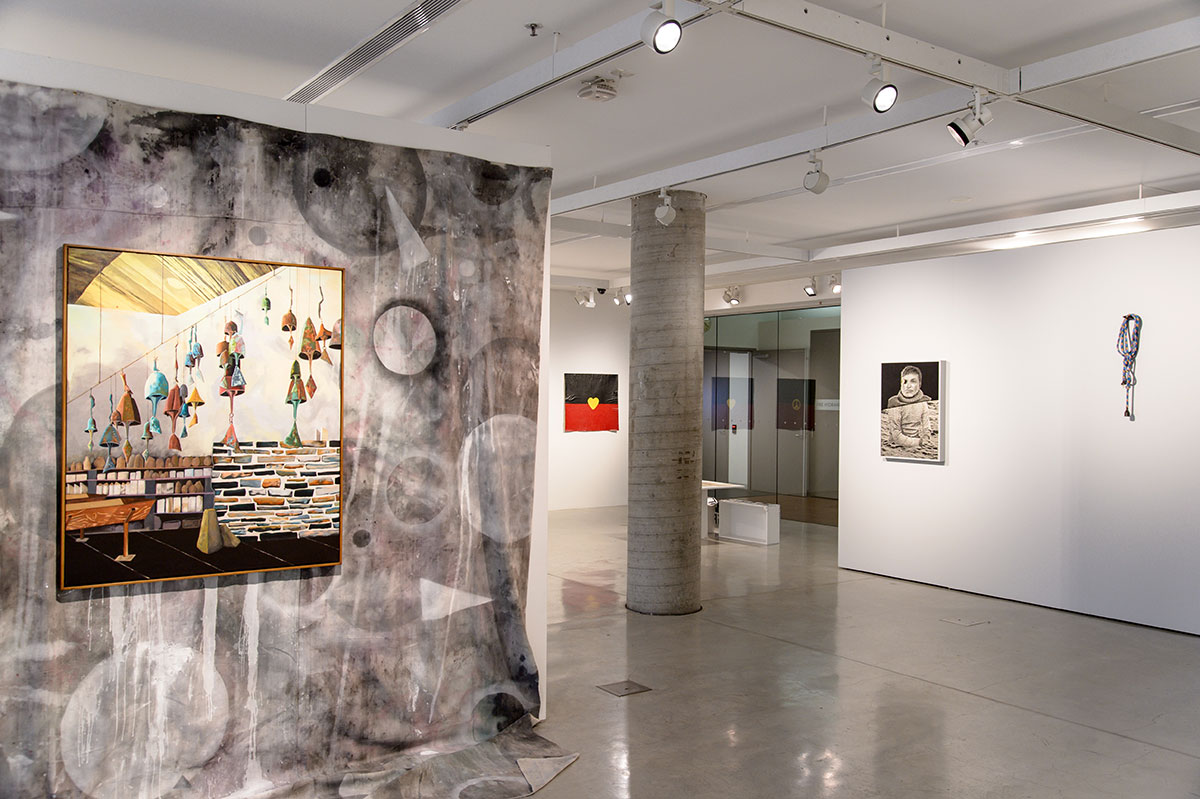
For Andre Breton humans were memory’s playthings. “Surrealism will usher you into death, which is a secret society. It will glove your hand, burying there the profound M with which the word Memory begins.” So what can we make of this shadowy melange of glances, smears and traces? Kylie Banyard paints awkward composite architectural spaces made more difficult with a self-conscious inconsistency of technique. Robert Pulie’s tenuously kitsch wooden wall plaques attempt to frame the societal threat that constitutes humour. Nada depicts a Hippy/Jesus-like figure who shrugs his shoulders to offer us nothing – a simple one-liner. In contrast, Pulie’s i message me :( is a Duchampian coup revelling in the possibility of true communication. Tony Clark, Linda Marrinon and Gary Carsley provide ponderous reflections on History and Gender. Deb Mansfield literally cuts into and across the body of machismo king Ernest Hemingway leaving a bundle of rope for us to use as an escape mechanism. The fabric works of Troy Anthony Bayliss and Archie Moore suggest that memory will always be compromised, made abject.
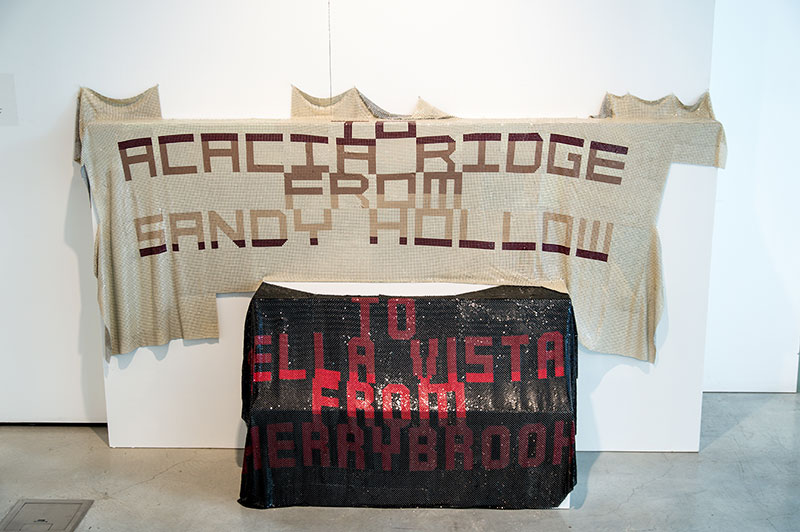
I was intrigued by the motif of doubling in the exhibition – mirror reflections compounding to reinforce tropes etc. For example, the overwrought tableaux presentations by Banyard and Carsley sit centre stage in the exhibition. Then there is the almost-suffocating accumulation of diaristic reflections by Clare Milledge. The glass ground, slumped fabric, hints of animalia and hesitant script lend a poetic quality to the chaos of sense perception. A further example of provocative pairing is the elegant highly considered expressivity of Linda Marrinon’s ceramics and drawings with Emily Hunt's amusingly clunky faux primal clay sculptures and engravings. Hunt, like so many of her contemporaries, revels in loose immediately rendered marks and gestures, the mashed potato license that the Expressionist modes of depiction confer.
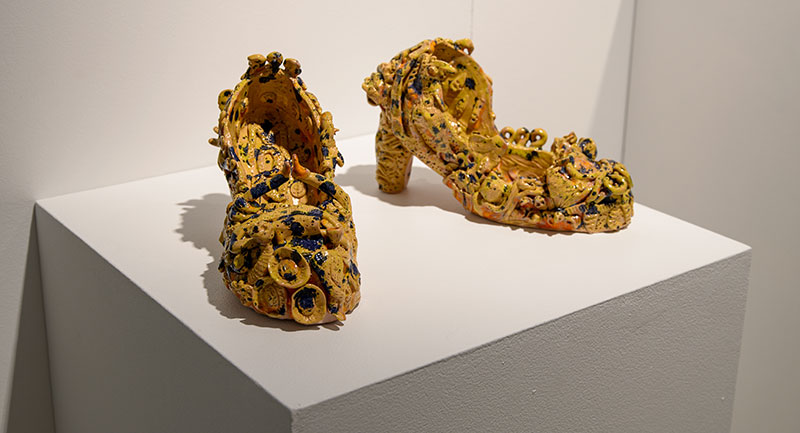
For me the most successful pieces in the show are the photographs. Aaron Seeto nods to Weegee and Baudelaire with a series of flickering daguerreotypes, some that reveal a cowering figure, others cryptic announcements. Debra Phillips presents modestly scaled but meticulously crafted and spectacularly detailed images: first, a copper plate, impossibly damaged and so unusable to transfer information but strangely still capable of suggesting a narrative; and a series of images that depicts the containers of now-obsolete colour film stock in red, green and yellow – as images of thwarted potential, they have the gravitas and mystery of artefacts pulled from an ancient Egyptian tomb.
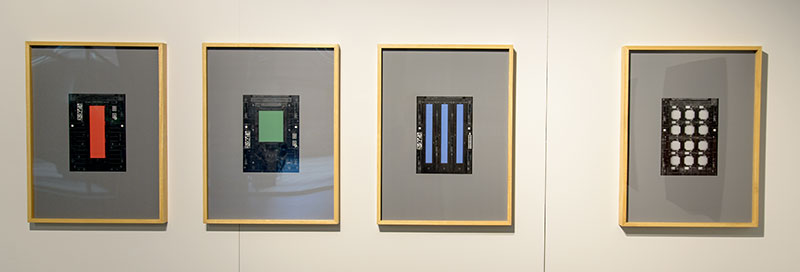
This strangely dark and creepy exhibition would have greatly benefitted from editing out some of the works and artists. Air is not only important to humans but it is also very good for inanimate objects labelled art. To paraphrase Oscar Wilde, moderation and discernment need not be fatal, excess and overload do not always succeed. But in spite of itself, The Mnemonic Mirror is an exhibition of artists whose individual practice tantalises the viewer with their keen engagement with the conundrums of identity and its links to the vagaries of moment and place and the uneasy ascription to the authorities of fashion, history and style.
